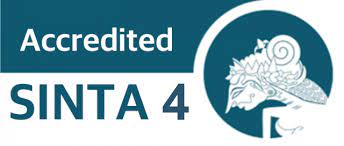PERBANDINGAN METODE MACHINE LEARNING UNTUK MENDETEKSI PENYAKIT JANTUNG
Abstract
Penyakit jantung termasuk ke dalam bagian penyakit kardiovaskular (CVD) atau sekelompok penyakit yang melibatkan pembuluh darah dan jantung yang merupakan salah satu penyakit serius yang diderita banyak orang secara global. Setiap tahunnya ada 17,9 juta jiwa yang meninggal akibat penyakit ini setiap tahunnya. Mendeteksi dini penyakit jantung sangat penting untuk perawatan dan pengobatan yang efektif. Penelitian ini memprediksi penyakit jantung dengan menggunakan metode Machine Learning (ML). ML memiliki efektifitas dan harga yang lebih murah untuk mendeteksi suatu penyakit. Penelitian ini bertujuan untuk memprediksi penyakit jantung dengan menggunakan perbandingan dari algoritma ML. Dalam penelitian ini menggunakan dataset dari UCI Machine Learning Repository. Pada penelitian ini, metode yang digunakan meliputi Random Forest, Support Vector Machine (SVM), XGBoost, K-Nearest Neighbor (KNN), Decision Tree, Logistic Regression serta Multi-Layer Perceptron Classifier (MLP). Dari penelitian ini didapatkan akurasi terbaik menggunakan algoritma XGBoost dengan akurasi mencapai 95,08%.
Downloads
References
[2] K. A. N. G. Harinadha Babu, Gunda Jayasree, Chattu Ashika, Vajja Ahalya, “Heart Disease Prediction System Using Random Forest Technique G.,” Int. J. Res., vol. 4, no. 1, pp. 88–100, 2023.
[3] K. Kanagarathinam and K. Sekar, “Estimation of the reproduction number and early prediction of the COVID-19 outbreak in India using a statistical computing approach,” pp. 1–5, 2020.
[4] M. Pal and S. Parija, “Prediction of Heart Diseases using Random Forest,” J. Phys. Conf. Ser., vol. 1817, no. 1, 2021, doi: 10.1088/1742-6596/1817/1/012009.
[5] A. Garg, B. Sharma, and R. Khan, “Heart disease prediction using machine learning techniques,” IOP Conf. Ser. Mater. Sci. Eng., vol. 1022, no. 1, 2021, doi: 10.1088/1757-899X/1022/1/012046.
[6] M. Pal, S. Parija, G. Panda, K. Dhama, and R. K. Mohapatra, “Risk prediction of cardiovascular disease using machine learning classifiers,” Open Med., vol. 17, no. 1, pp. 1100–1113, 2022, doi: 10.1515/med-2022-0508.
[7] V. Chang, V. R. Bhavani, A. Q. Xu, and M. A. Hossain, “An artificial intelligence model for heart disease detection using machine learning algorithms,” Healthc. Anal., vol. 2, pp. 100016, 2022, doi: 10.1016/j.health.2022.100016.
[8] K. Karthick, S. K. Aruna, R. Samikannu, R. Kuppusamy, Y. Teekaraman, and A. R. Thelkar, “Implementation of a Heart Disease Risk Prediction Model Using Machine Learning,” Comput. Math. Methods Med., pp. 14, 2022, doi: 10.1155/2022/6517716.
[9] J. Liu, J. Wu, S. Liu, M. Li, K. Hu, and K. Li, “Predicting mortality of patients with acute kidney injury in the ICU using XGBoost model,” PLoS One, vol. 16, no. 2 February, pp. 1–11, 2021, doi: 10.1371/journal.pone.0246306.
[10] Mila Desi Anasanti, Khairunisa Hilyati, and Annisa Novtariany, “The Exploring feature selection techniques on Classification Algorithms for Predicting Type 2 Diabetes at Early Stage,” J. RESTI (Rekayasa Sist. dan Teknol. Informasi), vol. 6, no. 5, pp. 832–839, 2022, doi: 10.29207/resti.v6i5.4419.
[11] S. Nashif, M. R. Raihan, M. R. Islam, and M. H. Imam, “Heart Disease Detection by Using Machine Learning Algorithms and a Real-Time Cardiovascular Health Monitoring System,” World J. Eng. Technol., vol. 06, no. 04, pp. 854–873, 2018, doi: 10.4236/wjet.2018.64057.
[12] L. Syafa’ah, Z. Zulfatman, I. Pakaya, and M. Lestandy, “Comparison of Machine Learning Classification Methods in Hepatitis C Virus,” J. Online Inform., vol. 6, no. 1, pp. 73-78, 2021, doi: 10.15575/join.v6i1.719.
[13] P. Lu et al., “A Gradient Boosting Crash Prediction Approach for Highway-Rail Grade Crossing Crash Analysis,” J. Adv. Transp., vol. 1, pp. 1-10, 2020, doi: 10.1155/2020/6751728.
[14] Janosi Andras, Steinbrunn William, Pfisterer Matthias, and Detrano Robert. (1988). Heart Disease. UCI Machine Learning Repository. [Online]. Available: https://doi.org/10.24432/C52P4X.
Copyright (c) 2023 Yutri Amelia

This work is licensed under a Creative Commons Attribution-ShareAlike 4.0 International License.














.png)

